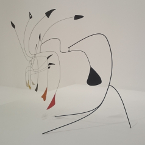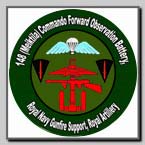ORIGINAL: dazkaz15
Could it not be done with a bump map?
You already have the data in game you need for the LOS, taking into account the elevation so its only really the visual aspect you need to cater for.
I learnt a little bit about it while doing the 3D cut out cards in my Losheim Gap planning aids.
If you colour in between the contour lines in different shades of grey, and apply it to a 3D image as a bump map, it will send the dark areas to the high points, and the lighter areas become the low points.
It would be fairly easy to colour in between the contour lines manually, especially seeing as there are only a few colours to represent relief on the Command Ops Maps.
The maps would need to be placed within a 3D rotatable scene of course.
Here is a tutorial on bump maps:
http://www.lynda.com/Photoshop-tutorial ... 478-4.html
This is an example of bump map used to give map elements a 3D effect:
http://www.shadedrelief.com/drape/bump.html
It wouldn't be as good as a vector based 3D map of course, but might serve to fill a gap in your development cycle?
Map Maker does this already by creating height layers at pre-set contour line intervals which are drawn by the map designer.
It can use a raster bitmap as the base layer to allow accurate tracing of contours, pathways, waterways, and designer-specified terrain effect layers available to support the combat and movement calculations in the engine.
Whether by tracing or coloring in regions, one still ends up with a 3d model of the combat terrain even if MapMaker can't portray it as such inside the game software.
Its mechanics aren't all that different from the industry standard GIS mapping tools Dave mentioned earlier.
My best friend happens to hold a PhD in geography, with an undergraduate specialty in digital mapping. He chuckles when I mention the potential uses of Google Earth in his area of expertise because it doesn't contain information at a fidelity which supports documenting his research revolving around land use, land cover, ecology, agricultural economics, and community planning and refers me to GIS information for the level of fidelity he needs for portraying his research.
To support exchange of map information on a project we were working together (me in a "graduate assistant" role), I loaded ESRI's ARCGIS viewer software on my computer.
Though I didn't have the software for generating the maps, the resulting GIS layers are very akin to those which can be generated in MapMaker for CO's uses. Difference is MapMaker limits the number of layers that can be used (more than likely to speed up the real time calculations which take place in the game) while GIS is for all practical purposes unbounded, but significantly slower than real time in allowing calculations from its information.






